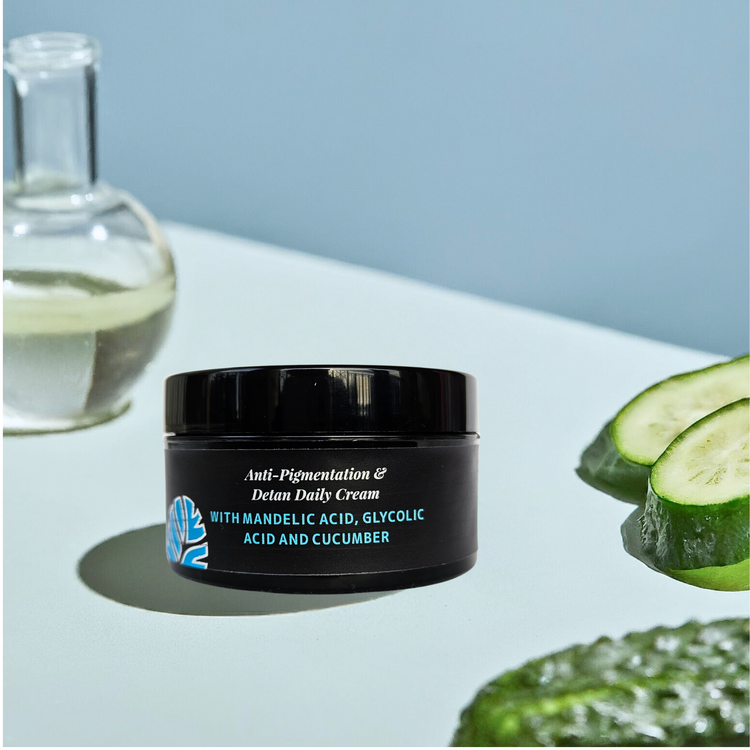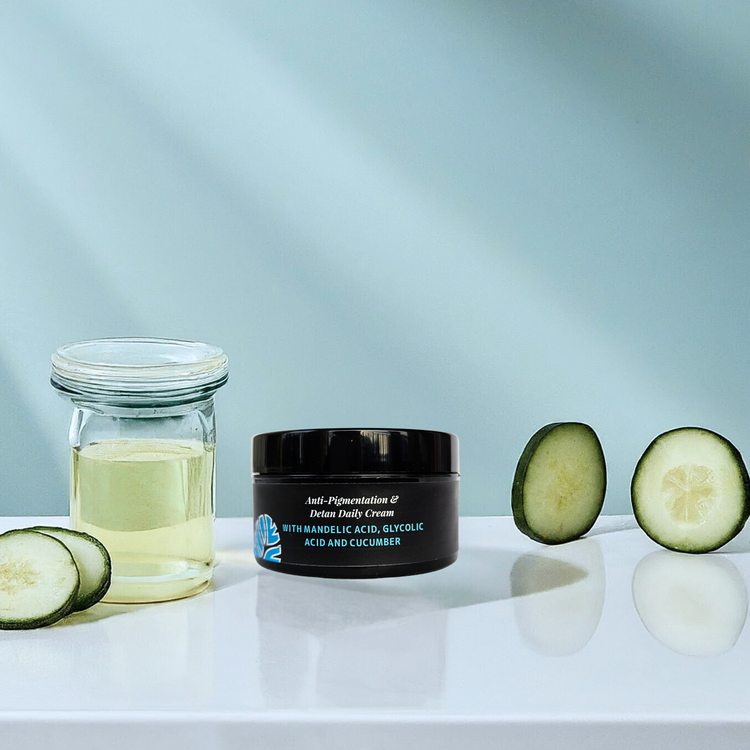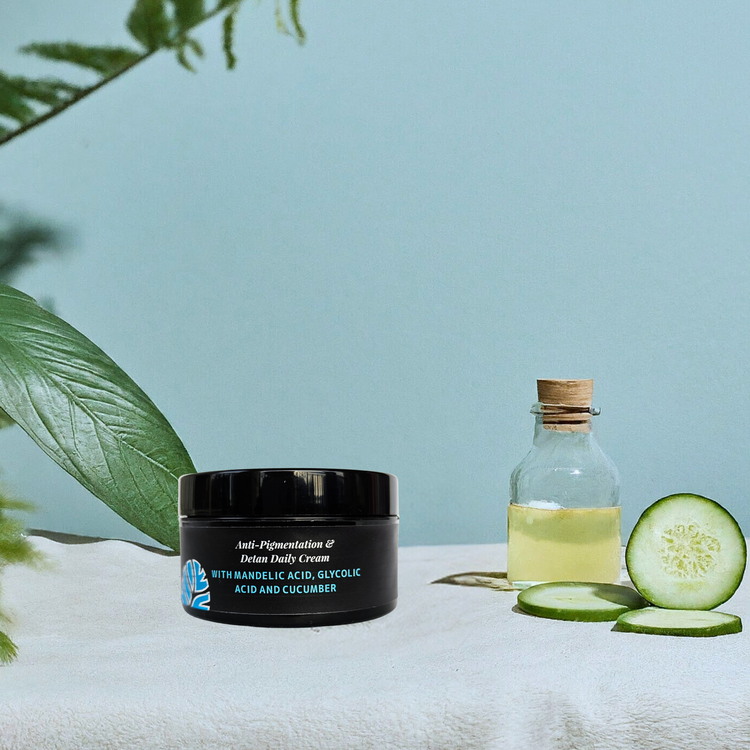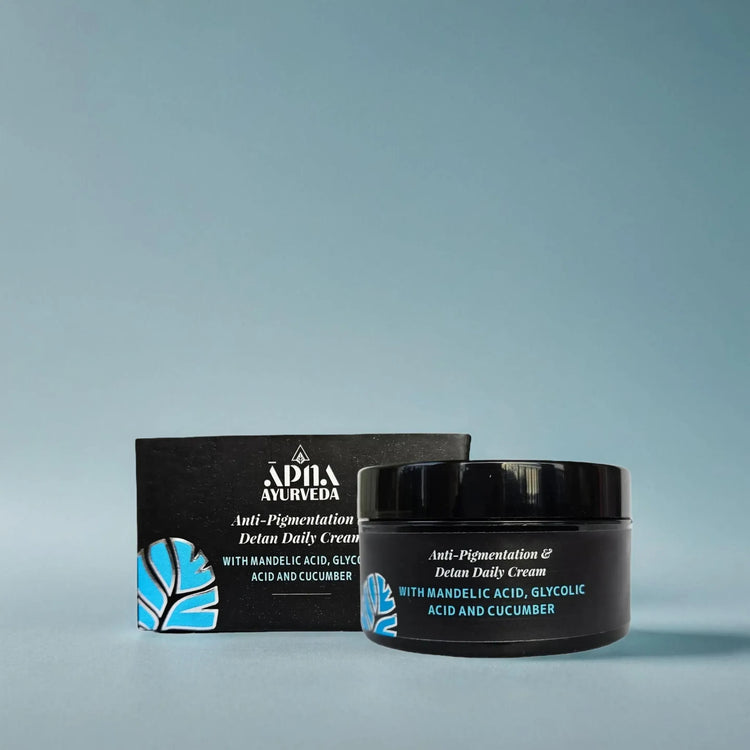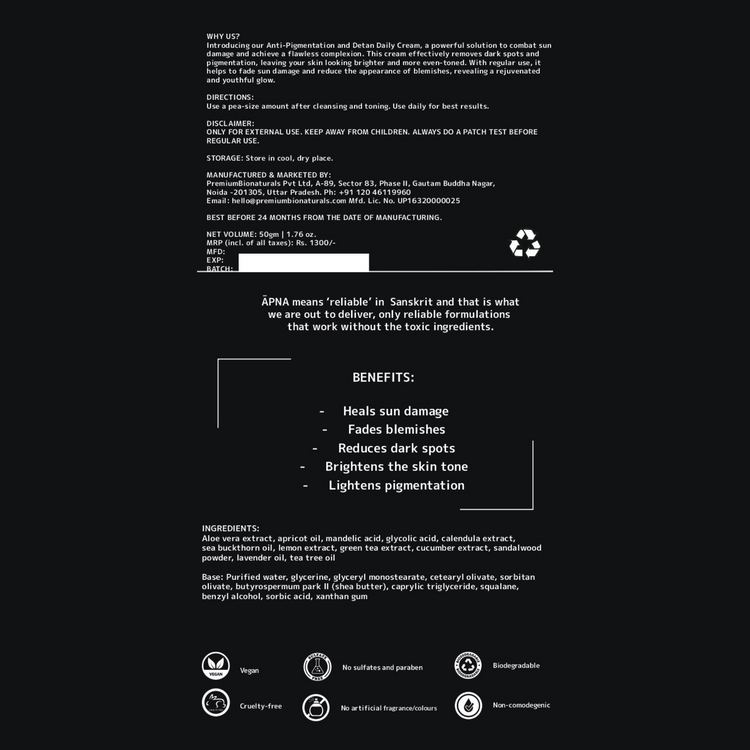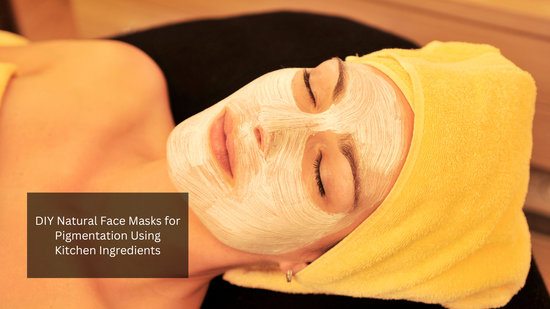Achieving radiant, even-toned skin is a common goal, and understanding the role of exfoliation is key. Glycolic and Mandelic acids are examples of alpha-hydroxy acids (AHAs) that are commonly found in skincare products. While they share some benefits, they also have significant differences in their properties and how they interact with the skin. Here, we'll explore glycolic and mandelic acid uses, and how to incorporate them into your skincare routine for optimal results.
Why does your skin need exfoliation?
If your skin looks dull and flaky, it’s not the best impression, right?
Exfoliation is the best way to enhance your skin's health and look. Dead skin cells build up on our skin over time, clogging pores, increasing oiliness, and pigmentation. This leads to congested, dull skin, prone to acne and aging.
Regular exfoliation removes away this build-up, revealing fresh, clear, and bright skin. The best way to exfoliate? Natural exfoliation!
Introduction to Alpha Hydroxy Acids (AHAs)
AHAs are a group of acids that occur originally in fruits, sugar cane, and milk. Benefits of AHA include exfoliation, improved skin texture, and acne reduction.
They help remove dead skin cells, revealing a smoother and brighter skin. Common AHAs include glycolic acid, lactic acid, and mandelic acid.
There are many types of AHA , some are:-
-
lactic acid, found in dairy and fermented vegetables
-
glycolic acid, found in sugarcane
-
malic acid, found in apples
-
mandelic acid, found in bitter almonds
-
tartaric acid, found in grapes
What is Mandelic Acid ?
Mandelic acid has a gentle exfoliating properties, making it good for sensitive skin’s. Mandelic acid is an alpha-hydroxy acid (AHA) with antibacterial and gentle exfoliating properties.
It is found in bitter almonds and has a larger AHA molecule than glycolic acid, which allows it to penetrate the skin more slowly and cause less irritation or sensitivity. Mandelic acid uses include treating hyperpigmentation, improving skin texture, and reducing acne concerns.
-
It has exfoliating properties that can help clear clogged pores and prevent breakouts, it also has antibacterial properties that can slow the growth of bacteria which can cause acne and pimples.
-
It has antibacterial properties too.
-
It helps to reduce the appearance of fine lines, wrinkles, and hyperpigmentation.
Mandelic acid is a AHA that offers gentle exfoliation, making it good for individuals with sensitive or acne-prone skin.
What is Glycolic Acid ?
In skincare products, AHAs like glycolic acid, which has strong exfoliating properties. It is the smallest AHA molecule and is found from sugar cane, making it effective at penetrating the skin's surface .
-
Glycolic acid can help to decrease the appearance of hyperpigmentation, such as aging signs, sun dark-spots, and acne marks.
-
Glycolic acid skin benefits contain an increase in collagen production and improving elasticity.
-
Regular use of this acid can improve skin tone and texture, decreasing dullness and uneven pigmentation.
Use of Mandelic Acid and Glycolic Acid together
Use of mandelic acid and glycolic acid together can increase the strengths of both acids.
-
Combining both acids provides effective exfoliation, which improves skin tone and texture.
-
Use them on alternate days or in different routines like morning and night routine skincare (for example, if you use mandelic acid in the morning use glycolic acid at night) for best results.
-
AHAs increase sun sensitivity, so sunscreen is must to protect from sun damage.
A combined formulation can increase the benefits of both acids. An excellent option that includes both mandelic acid and glycolic acid, is our Āpna Ayurveda Anti-Pigmentation and Detan Daily Cream which is designed to provide these benefits while nourishing your skin.
Key Differences of Mandelic Acid and Glycolic Acid
Here we will compare and contrast two popular AHAs: Mandelic acid and Glycolic acid.
Molecular Structure
Mandelic acid, has a larger molecular size (152 Daltons), allowing it to penetrate the skin more slowly and gently. In contrast, glycolic acid, has a smaller molecular size (76 Daltons), enabling it to penetrate the skin more quickly and deeply.
pH Level
Mandelic acid has a pH of around 3.4, making it less irritating and suitable for sensitive skin. In contrast, glycolic acid has a lower pH of around 2.0, making it more aggressive and effective at resurfacing the skin.
Penetration Depth
Mandelic acid targets the epidermis, helping with mild acne, hyperpigmentation, and fine lines. Glycolic acid penetrates deeper into the dermis, addressing severe acne, sun damage, scarring, and improving collagen production.
Frequently Asked Questions:
Q1) Is mandelic acid good for uneven skin tone?
A) Yes, it is great for uneven skin tone.
Q2) Why is mandelic acid good for darker skin tones over glycolic acid?
A) As mandelic acid has large molecules, it provides a gentle and mild exfoliation.
Q3) Which is better, glycolic or mandelic acid?
A) Mandelic acid is generally considered to be a gentler option than glycolic acid.
Q4) When should you not use mandelic acid?
A) If you have a nut allergy or irritated skin.
It's critical to remember that everyone's skin is unique, and what works well for one person may not work well for another. If you want to use glycolic acid and mandelic acid together in your skincare routine, start with a low concentration of each acid and gradually increase the frequency or concentration as your skin adjusts. When using AHAs, it's also important to use sunscreen with a high SPF during the day, as they can make the skin more sensitive to the sun. Happy exfoliating!







